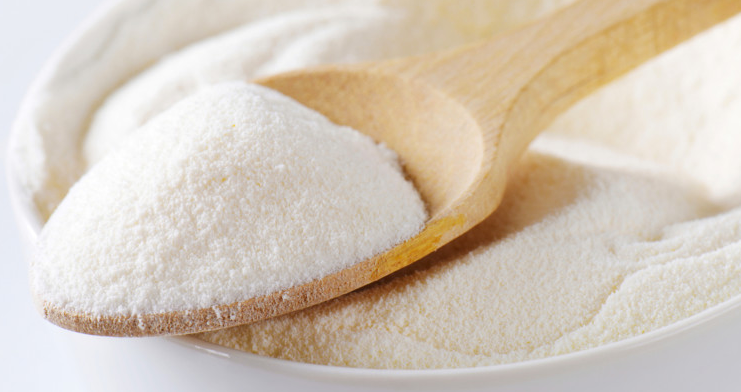Gelatin is the secret ingredient that binds so many of our most popular treats together. From gummy candies and Jello to baked goods and desserts, gelatin powder adds moisture and that famous jelly-like texture to the sweets that we all know and love.
But what is gelatin made of, exactly? And how does it work to bring so many of our favorite treats together?
Here’s everything you need to know about gelatin: what it is, how it’s made, and how you can use it in your own kitchen to make delicious gelatin desserts and treats.
What is gelatin?
Gelatin is a protein-based product that is used as a thickening and solidifying agent during cooking.
It is most popularly used for changing the texture of the foods you make. Adding gelatin to a liquid can change the composition of the product, resulting in a gelatinous “jelly-like” texture. For example, gelatin is a crucial ingredient for gummy recipes. It’s also the star ingredient of Jello, the famous low-calorie jellied snack and dessert base.
Besides gelatin desserts, gelatin can also be used in savory dishes like soups, gravies, and sauces to thicken them up. You might also find gelatin as an ingredient in gel capsules and supplements.
When it comes to cooking, this gelling agent is generally available in two different forms: gelatin powder and gelatin sheets. Unflavored gelatin powders are the most popular form of gelatin for cooking, although you can find other varieties as well, like flavored Jello gelatin, depending on your needs.
What is gelatin made of?
Gelatin is primarily made of collagen, a structural protein found in the hair, skin, bones, and connective tissues like tendons and ligaments.
Here’s how to make gelatin: producers will take these skin, bone, and connective tissues from various livestock, like pigs and cows, then boil them down to extract the collagen peptides. From there, the products are treated with strong acidic or basic solutions to purify and isolate the product, and then they are dried.
The final product is a colorless, odorless solid product that can be added to different liquids to form a jelly-like texture.
While this plain gelatin is the most multipurpose option, there may also be other gelatin ingredients involved depending on the type of gelatin product you are buying. For example, commercial products used for gelatin desserts may also contain sugar, artificial sweeteners, and flavoring agents.
Are there different kinds of gelatin?
So all gelatin products are created via collagen extraction, but the sources and methods may vary. For example, you might find variations in the forms of:
Is gelatin vegetarian?
Because they are made from the skin, bones, and soft tissues of animals, gelatin is not considered vegan-friendly and may not be suitable for vegetarians. However, there are other gelling alternatives for those looking for a plant-based option.
One popular gelatin substitute is agar-agar. This can be thought of as a “vegan gelatin” option because it does a similar job of thickening and solidifying foods but is made from red algae (otherwise known as seaweed) rather than animals. Like gelatin, agar-agar can come in powdered forms, or you can find them in flakes or bars.
Using agar-agar as a gelatin substitute in your cooking also yields a similar jelly texture in your final product, but recipes that use agar-agar tend to be a little more firm. You also need to boil agar-agar in order to properly dissolve it, which can add an extra step in the cooking process.
Other suitable vegan gelatin substitutes include pectin, which is made from fruit, and carrageenan, which also comes from seaweed. If you are looking to make vegan candies, you may be looking for a pectin gummy recipe.
How to bloom gelatin
If you decide to work with gelatin, one key consideration to keep in mind is that gelatin needs to be “bloomed” before it is added to your recipe.
Gelatin powders and gelatin sheets are dry products, so they need to be softened and hydrated before mixing them into the liquids in your recipe. Otherwise, the dry gelatin may not dissolve properly, leading to lumps and an uneven texture.
Here’s the best way to bloom gelatin:
The process of blooming gelatin sheets is very similar. You might need to use more water to cover the sheet fully, then remove the sheet and squeeze out the excess prior to heating it gently and adding to the recipe.
Ways to use gelatin
Once the gelatin has been bloomed, you can use it for several different recipes and desserts.
Keep in mind that working with gelatin will often take a fair amount of time since it needs to sit for a while. You’ll want to give yourself enough time to allow for the gelatin to set and solidify in your refrigerator. Most gelatin gummy recipes require a couple of hours in the fridge to allow the food to solidify to the right texture, so make sure to schedule accordingly.
Popular recipes for gelatin desserts and goodies include:
- Jello
- Gummy candies
- Puddings
- Cakes
If you’re using plain gelatin or an unflavored gelatin powder, be sure to read the instructions on the original packaging for specific preparation methods. You can also get creative by using flavored gelatin powders!
Key Takeaways
Gelatin comes from a rather surprising source: the bones, skin, and soft tissues of livestock and fish. However, the final product is a plain, tasteless powder that can be used in a variety of ways to add texture and dimension to some of our favorite snacks and sweets.



Comments (1)
Setting the bar for gummy mold products!